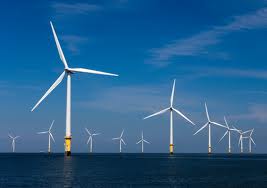The whole point of “green,” clean energy is to keep citizens and nature healthy while improving the economy. Medical problems related to industrial and energy pollution are well-documented. When you replace oil power plants with non-polluting wind or solar farms, or hydroelectric power, (or for the adventurous—nuclear plants), the immediate effects are decreased smog and fewer other chemicals (improving future health)—and natural forests and environments are saved from unnecessary destruction, improving the landscape’s beauty.
The fact that fossil fuel supplies will run out is not some flawed notion, or alarmist fear-mongering by fund-hungry environmentalists who have acquired a taste for drama. Despite how many projected trillions of barrels of oil might theoretically exist, there are real obstacles to tapping newly-located oil sources, such as prohibitive processing costs, massive amounts of water required for such processing, and lack of technology available to actually extract fossil fuels from certain parts of the earth.
To indefinitely continue comfortable lives, we need a guaranteed unlimited source of power. There will always be sunlight; there will always be wind, tides, biomass, and above all, human ingenuity.
Setting up wind farms, though some argue they reduce the value of the landscape (can you imagine a turbine in a Bob Ross painting?), takes advantage of one of Massachusetts’ natural resources—wind.
You have to favor the clean future of the country over a landscape dotted with giant fans. Reducing our state’s dependence on fossil fuels will decrease demand elsewhere and save oil for production of goods, rather than burning it up to keep the lights on.
It is worth noting that Gov. Deval Patrick helped pass the Green Communities Act in 2008, which drops the cost of utilities and authorizes utility’ companies to “own solar installations for use on customers’ roofs” and, among other things, allows customers to sell their excess power from “small renewable sources … back into the grid.” A phenomenon called net metering.
Nonetheless, not all has gone well in the quest for renewable energy, as is the case with Princeton Municipal Light Department of Princeton, MA, which took out a $7.3 million mortgage in 2006 for two new wind turbines. Although the company had no debt, and the turbines had become active in 2010 (one broke in 2011 and was restored by 2012), the company has lost its rate-payers almost $1.875 million, though the department was able, in 2011, to report close to half a million in annual profit.
The company has no commercial customers, and only a residential base of 1,500; its customers have had to pay some of the highest utility rates in the state. Princeton Municipal is looking to sell off the turbines to any interested party.
Massachusetts’ electricity comes mainly from natural gas (52 percent), coal (24 percent), and nuclear energy (13 percent.) The rest comes from renewable resources.
Aiming to improve those numbers is the Berkshire Wind Power Cooperative, a non-profit entity of 14 municipal utility companies and the Massachusetts Municipal Wholesale Electric Company; together, the cooperative built 10 General Electric 1.5-megawatt wind turbines on the ridges of Brodie Mountain, in Hancock. The project is estimated to power 6,000 homes and “offset the production of nearly 612,000 metric tons of carbon dioxide and the use of 1.17 million barrels of oil.”
The Hoosac Wind Power Project, which is Massachusetts and Southern New England’s largest wind energy facility to date, went online in December, 2012, and boasts 19 GE 1.5-megawatt turbines, can power up to an estimated 10,000 homes. The Hoosac Wind Power Project is located in Florida and Monroe, Massachusetts, and its customer is NSTAR.
Predictably, these projects, mostly due to the large amounts of noise they make produce, have come up against immense opposition from inhabitants. It’s pretty tough to convince some residents that having a giant 200-ton sky-blender in the backyard is a good idea, given the noise suffered by those living close to these structures.
An MIT report, titled “The Future of Natural Gas,” suggests that coal and oil-burning power stations will eventually be upgraded or replaced to burn natural gas.
As much as renewable sources might be desirable, conversion to natural gas may end up being the first step toward cleaner energy, before large-scale solar and other resources are tapped as primary energy sources. It’s not quite the “green dream,” but any environmentalist should be happy when the last coal-fired plant shuts down its furnace for good.
Still, with developments like these, Massachusetts is on its way to maintaining the American Council for an Energy-Efficient Economy (ACEEE)’s 2011 ranking of “first in the nation for energy efficiency policies and programs.”





















































